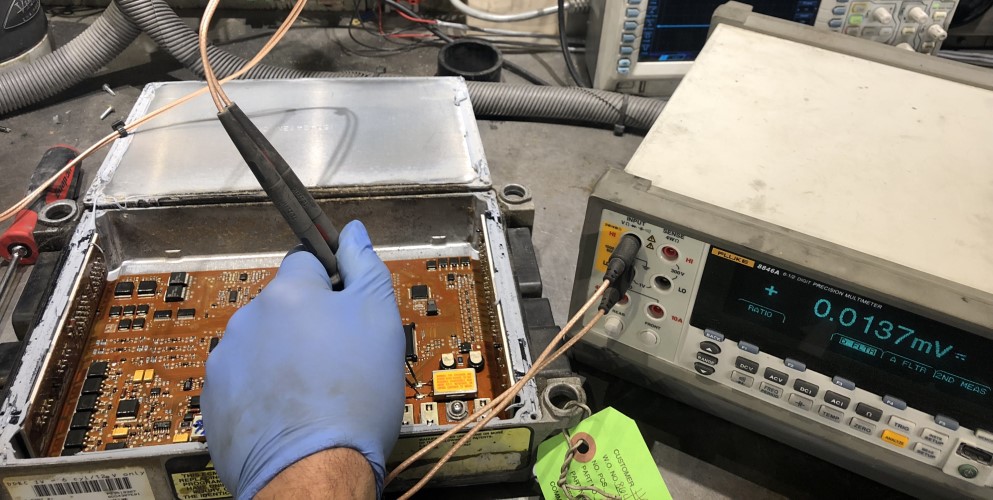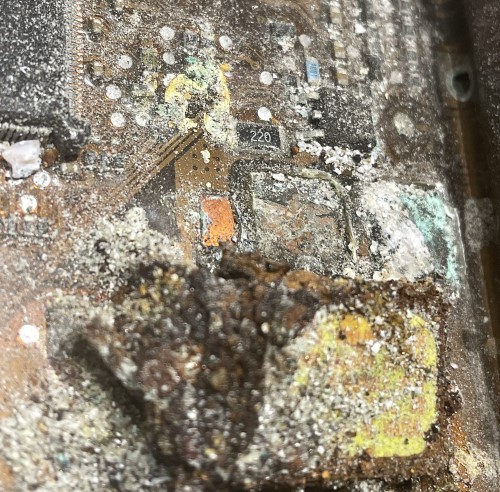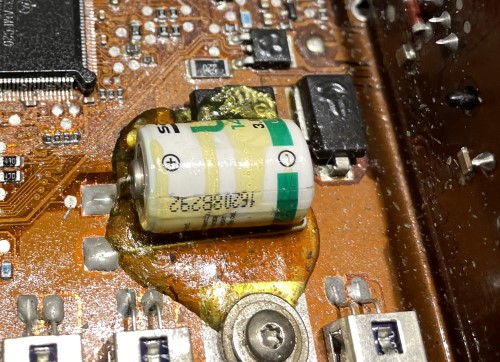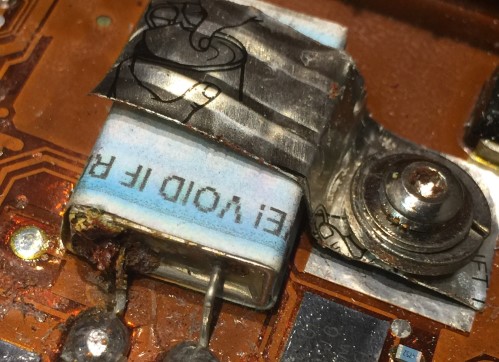When it comes to DDEC ecms with internal batteries (DDEC IV and up) The most common ecm component failure is the internal battery followed by memory. All but the oldest DDEC IV software versions will trigger an active flash code 46 (SID 214): “RTC backup battery low” when the internal battery voltage drops below 2 volts. Flash code 53 Nonvolatile memory failure and/or Nonvolatile memory data incorrect (Flash 53) is triggered from an invalid checksum that’s purpose is to detect data corruption in a DDECs program. Both Flash 46 and 53 cannot be cleared while active. A dead DDEC IV ecm battery won’t stop a DDEC IV ecm from running until it leaks acid and chemically damages the circuit board. In other words a dead DDEC IV ecm battery isn’t the real problem, the real problem is the acid that leaks from a dead DDEC IV ecm battery.
DDEC IV ECM battery replacement – DDEC IV only (No internal battery inside a DDEC III)
Back in 2008 if a DDEC IV had an active fault code 46 (SID 214): “RTC backup battery low” it was believed that the ECM had to be replaced. I had to tell the owner of that ECM that he needed to replace the ECM to correct the problem and he was looking at about $2,000 dollars. I hated giving out that bad news and I hated not being able to offer any other option. So I took some time to look into the problem.
After dissecting several cores I found that fault code 46 went active when the voltage from the internal battery to the RTC (Real Time Clock) circuit dropped below 2 volts. As it turned out an active RTC fault was really fairly minor problem but should be taken as a warning. Want to know what\’s a lot worse than a dead internal battery in an ECM? A dead internal battery leaking acid…all over the circuit board.
In 2009 I didn’t have a source for getting a OE DDEC IV ecm battery. Instead, I used large coin cell batteries such as those found in key fobs. That procedure bought the owners of DDECs with this problem a few more years but nothing close to the life of the original battery. Besides short life these coin cell batteries had another problem. Sometimes the battery itself would pop out of it’s holder and bounce around the inside of the ECM until it shorted and shut the truck down. Coin cell and other consumer grade batteries are not anything like the commercial grade OE batteries used in these ECMs. Ever try replacing old D cells out of a Maglite only to find the batteries jammed in the tube by white oxidation? It doesn’t take more than a few years for consumer grade batteries to leak and damage to whatever they’re installed in. Now imagine how long those batteries would have lasted if they had to work while being exposed to battery killing vibration and engine heat for 50,000 hours. Under those conditions cheap batteries die quick and leak acid on the one thing we can’t replace, the circuit board. DDEC IV circuit boards are out of production and that makes them the most valuable part of an ECM. The high quality commercial grade battery designed for the DDEC IV can work in these conditions and can easily last 10 years and often reach 20. I’ll never install a coin cell or camera battery again in a DDEC because I know the problems that come with the cheaper batteries never worth it. We only use the OE batteries. If the ECM is not connected to a 12 or 24 volt unswitched supply and instead sits on a shelf somewhere the internal battery will drain faster and life will be about 10 years. If the DDEC IV is connected to a good set of truck or vehicle batteries when not in use the DDEC IV ecm battery drain will be minimal and life will exceed 10 years easily.
**The internal battery in DDEC IV ecms is not the only part that fails over time. This service includes the replacement of all other parts other than memory that typically fail within a 10-15 year period.

A DDEC IV will still run with a dead internal battery. The real problems start when that battery starts leaking. Unless it was replaced most 99-02 DDEC IVs have dead battery.

A dead or damaged DDEC IV ecm battery will eventually leak acid and damage the ECM

Some DDEC repair shops use key fob or camera batteries as replacements but consumer grade batteries like those are not designed for the vibration and the thermal cycles the OE battery was designed to endure.

Some other ECM repair shops cut up soup can lids and use the strips to hold down DDEC batteries.
DDEC IV Ecm battery replacement
- After replacement the new battery voltage is tested the following day to ensure the new battery is not defective and the DDEC doesn’t have an abnormally fast internal battery discharge rate
- Average job completion time is 2 business days provided other scheduled jobs are not pending.
- Expediated service is $450 + shipping when available
- If oil, fuel, or water has contaminated the circuit board traces or circuit board components then an additional fee gets added to the job to cover the extra work. *The additional costs range from $50 to $250 depending on the amount of extra work that was needed to get the circuit board and its components cleaned up. If circuit board traces are oxidized, shorted, broken or other damage is found and/or other major components are damaged and need replaced then the job gets upgraded to a repair.